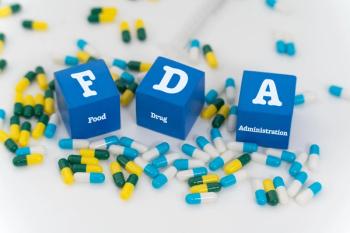
Edoxaban approved to reduce stroke risk in AF patients
The factor Xa inhibitor edoxaban (Savaysa, Daiichi Sankyo) has been approved by FDA to lower the risk of stroke and systemic embolism in patients with nonvalvular atrial fibrillation (AF), according to a January 8 announcement.
The factor Xa inhibitor edoxaban (Savaysa, Daiichi Sankyo) has been approved by FDA to lower the risk of stroke and systemic embolism in patients with nonvalvular atrial fibrillation (AF), according to a January 8 announcement.
FDA has also approved this oral, once-daily selective factor Xa inhibitor to treat deep vein thrombosis (DVT) and pulmonary embolism (PE). These indications are directed toward patients who have previously been given a parenteral anticoagulant for 5 to 10 days.
“It is important to have a variety of these types of drugs available as options for patients,” explained Norman Stockbridge, MD, PhD, director of the division of cardiovascular and renal products in FDA’s Center for Drug Evaluation and Research.
FDA based its approval for the use of edoxaban in patients with nonvalvular AF on a clinical trial including more than 21,000 participants. Two different dosages of the drug were compared with warfarin to evaluate their effects on stroke and systemic emboli rates. The use of edoxaban was found to result in significantly less major bleeding compared to warfarin, while the higher dose administered in the trial was found similar to warfarin for the reduction in stroke risk.
In regard to the treatment of patients with DVT and PE, the safety and efficacy of edoxaban was studied in more than 8000 study participants. In this trial, the drug was compared with warfarin as to its rate reduction of the recurrence of symptomatic venous thromboembolism (VTE) events, including DVT, PE, and VTE-related death. A symptomatic recurrent VTE occurred in 3.2% of those receiving edoxaban versus 3.5% of those receiving warfarin.
As with the use of other such agents, the anticoagulant effect of edoxaban can cause bleeding to occur, including bleeding that can be life threatening. FDA noted that patients taking edoxaban should be counseling by healthcare professionals about the increased risk of bleeding. There is no treatment to reverse the anti-coagulant effect of edoxaban.
FDA is requiring that the label for edoxaban carry a boxed warning stating that the drug is less effective in AF patients with a creatinine clearance (CrCl) >95 mL/min and also that kidney function needs to be assessed prior to initiating treatment. Furthermore, patients with CrCl levels >95 mL/min have a greater risk of stroke compared to similar patients treated with warfarin, and should not use edoxaban, but another anticoagulant.
Newsletter
Pharmacy practice is always changing. Stay ahead of the curve with the Drug Topics newsletter and get the latest drug information, industry trends, and patient care tips.











































































































































































































